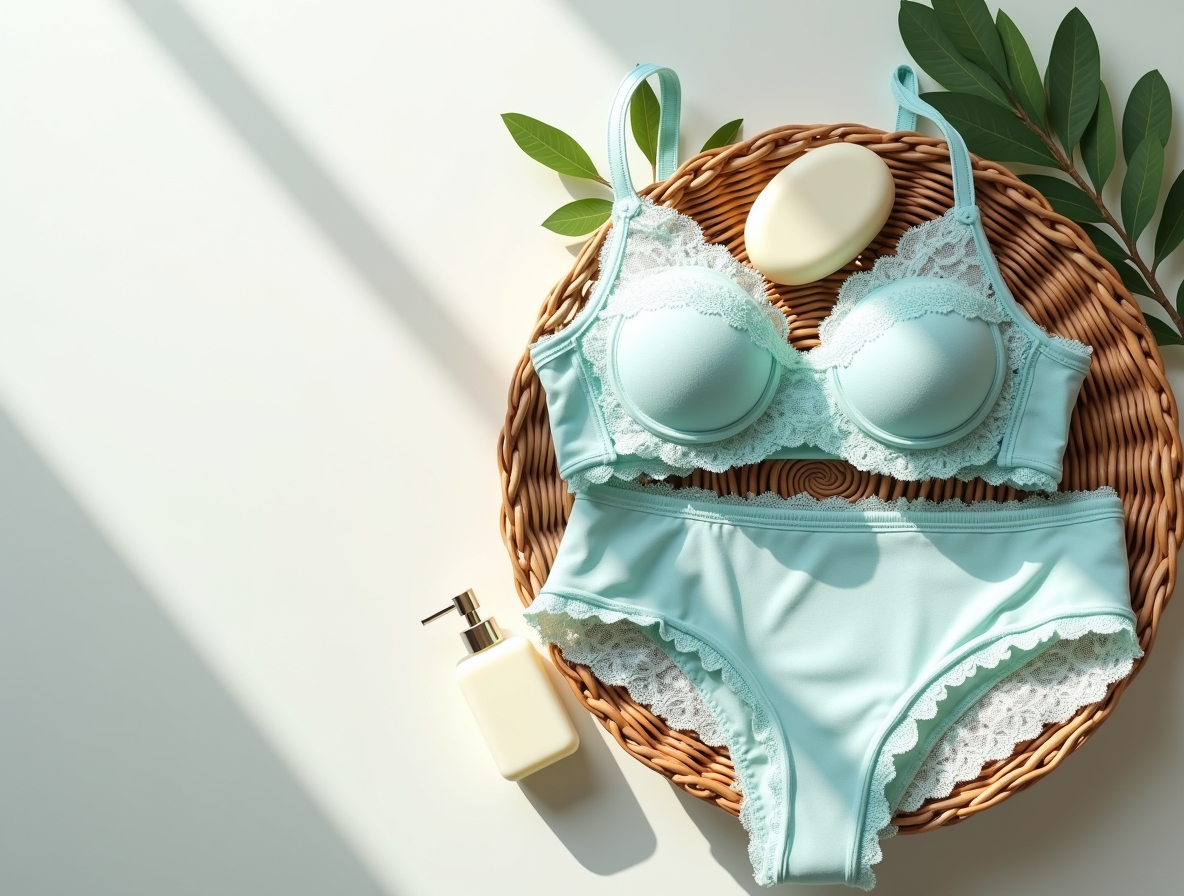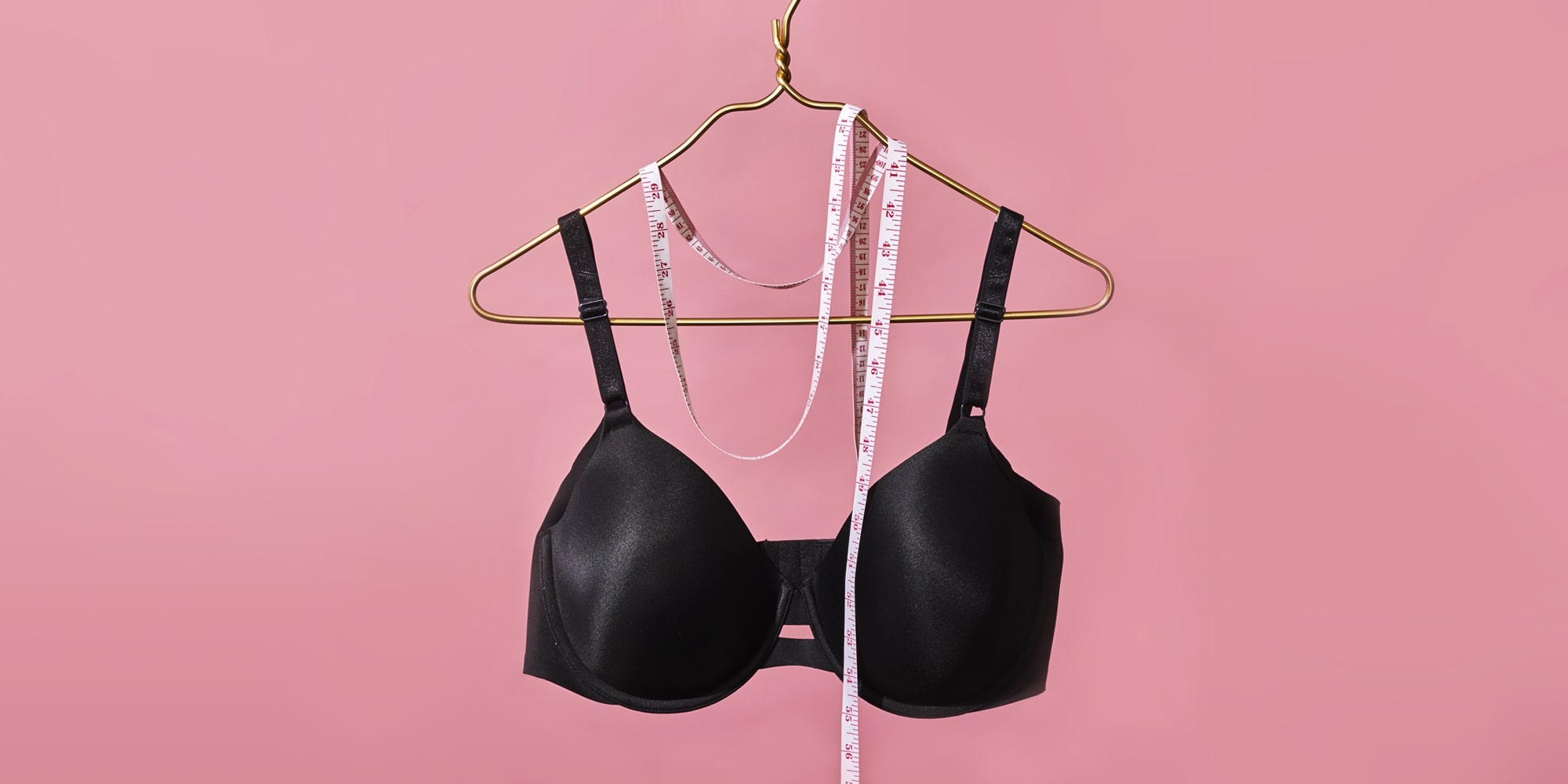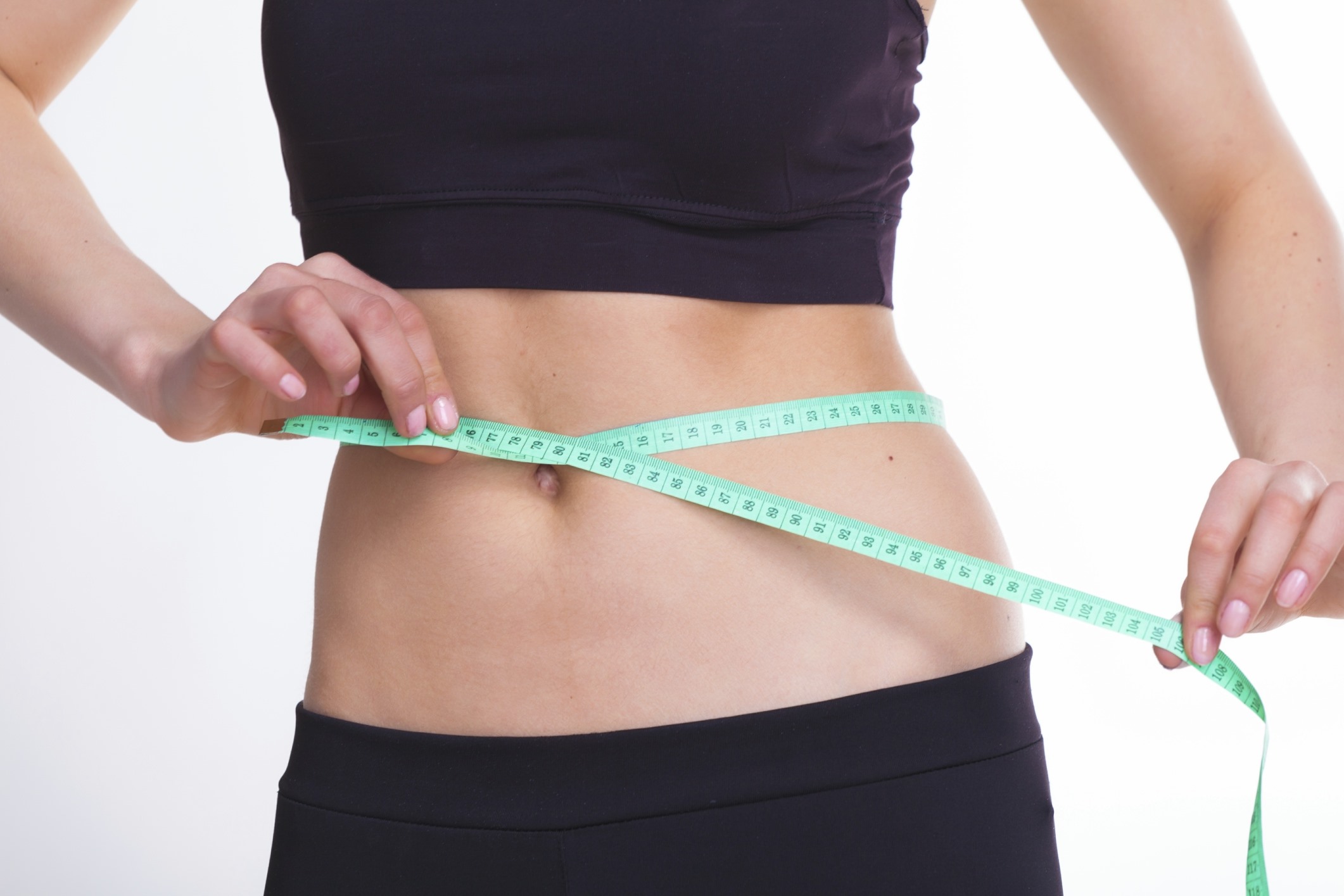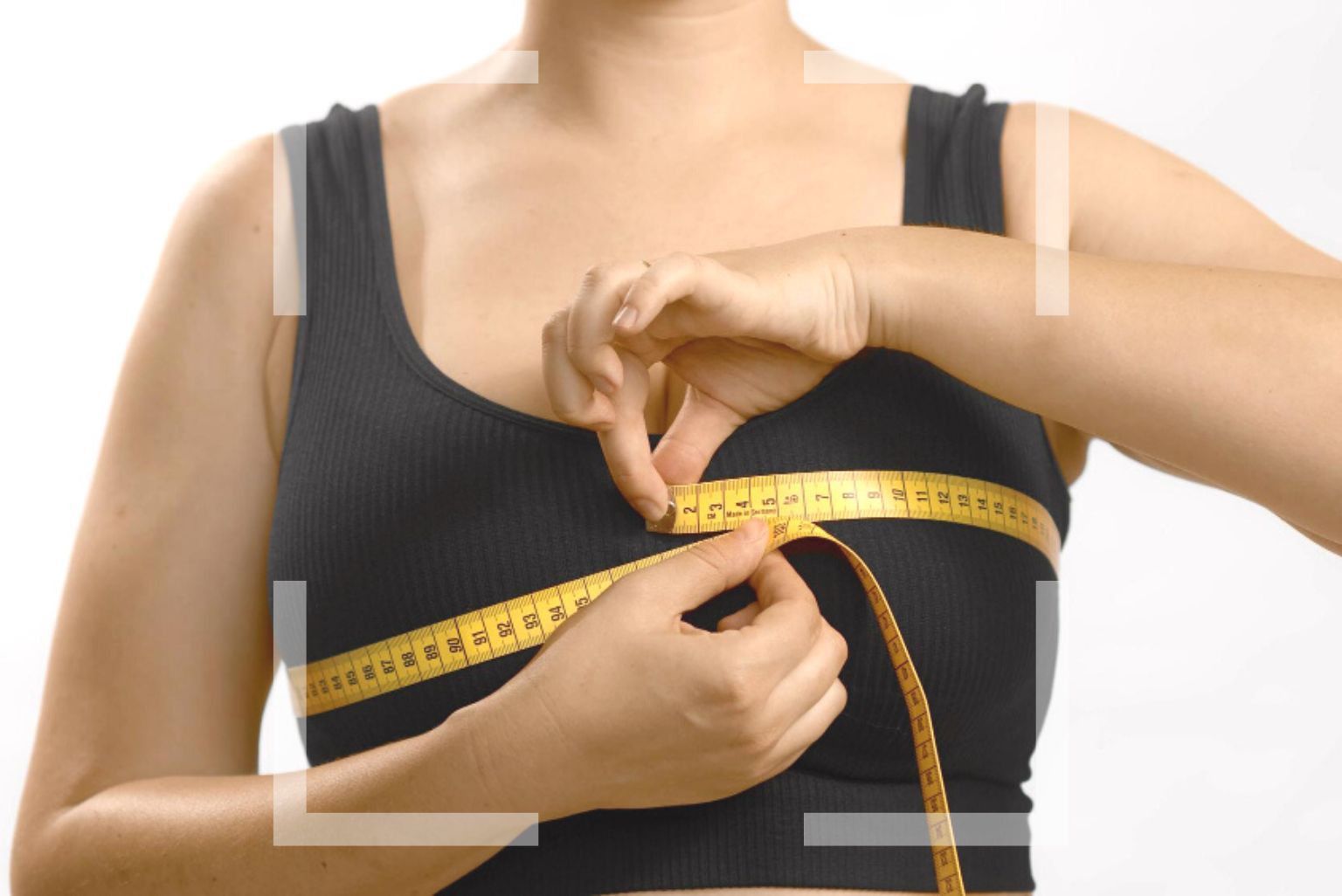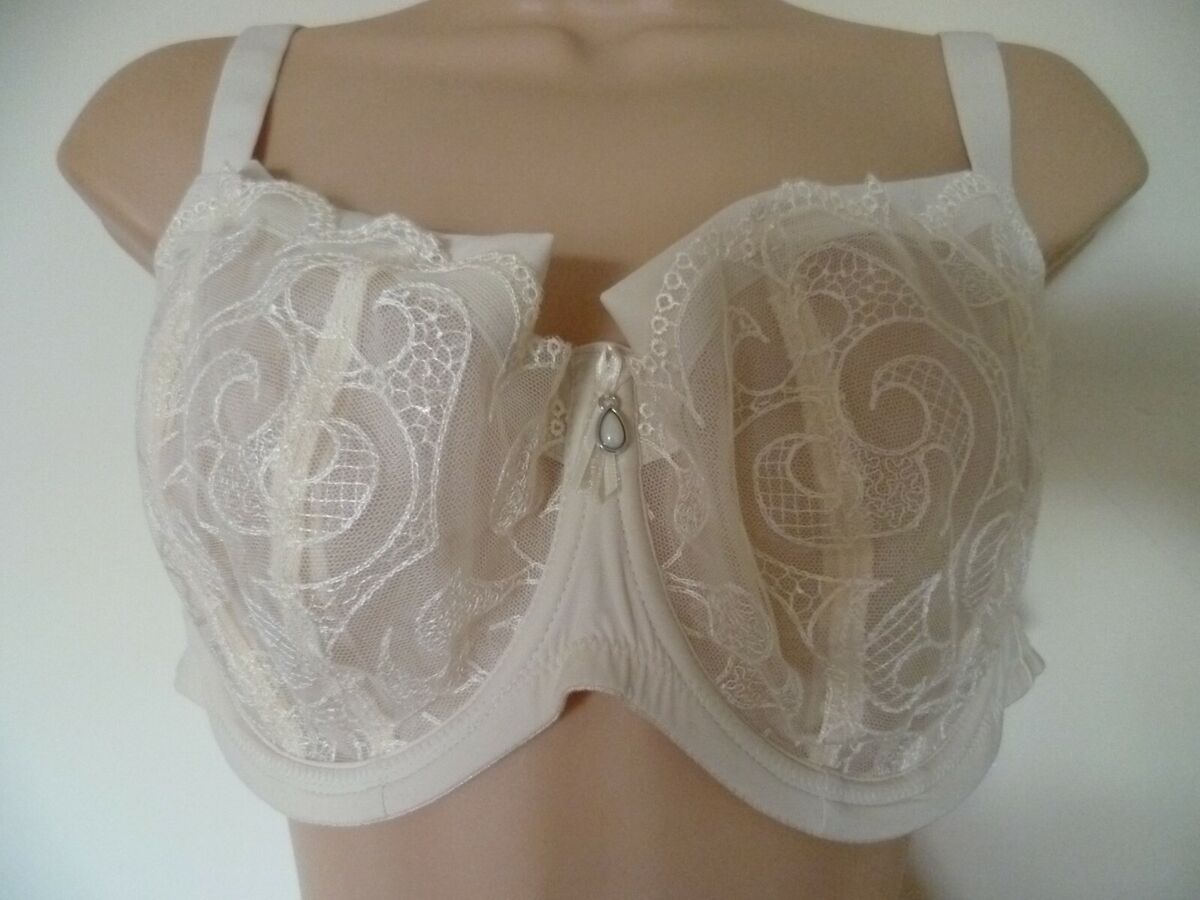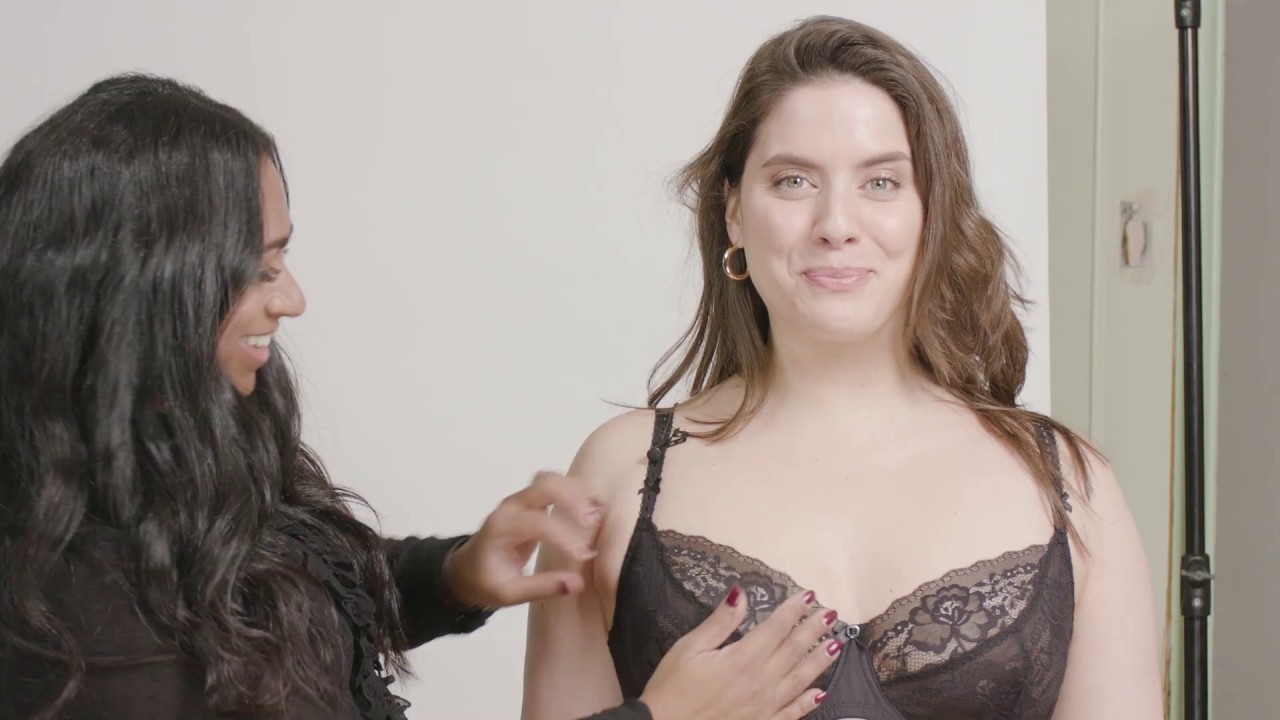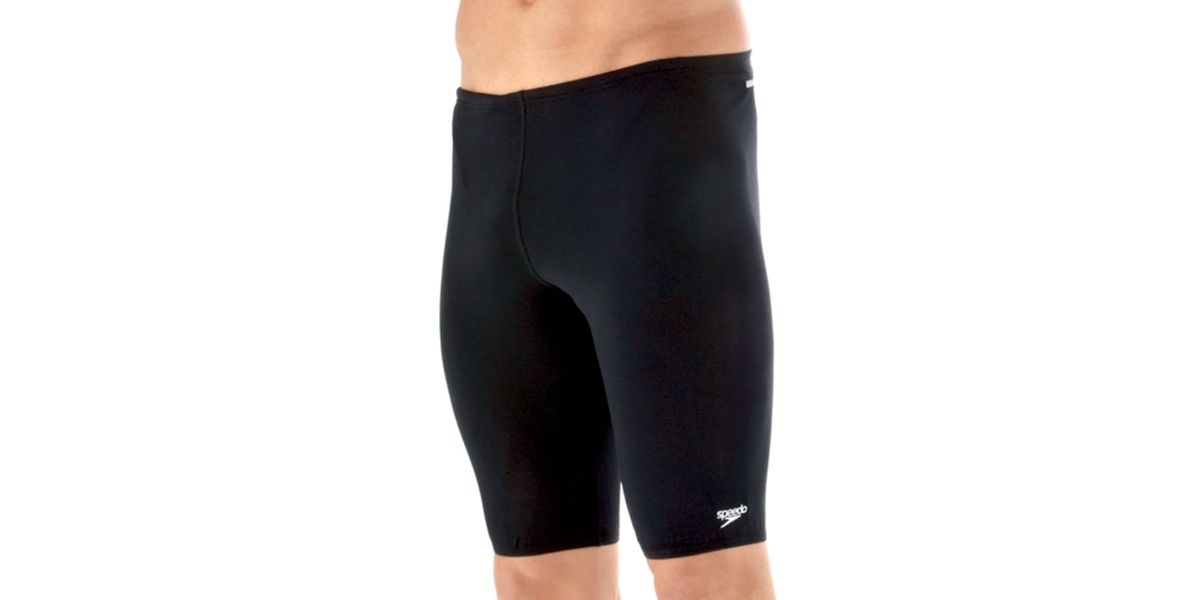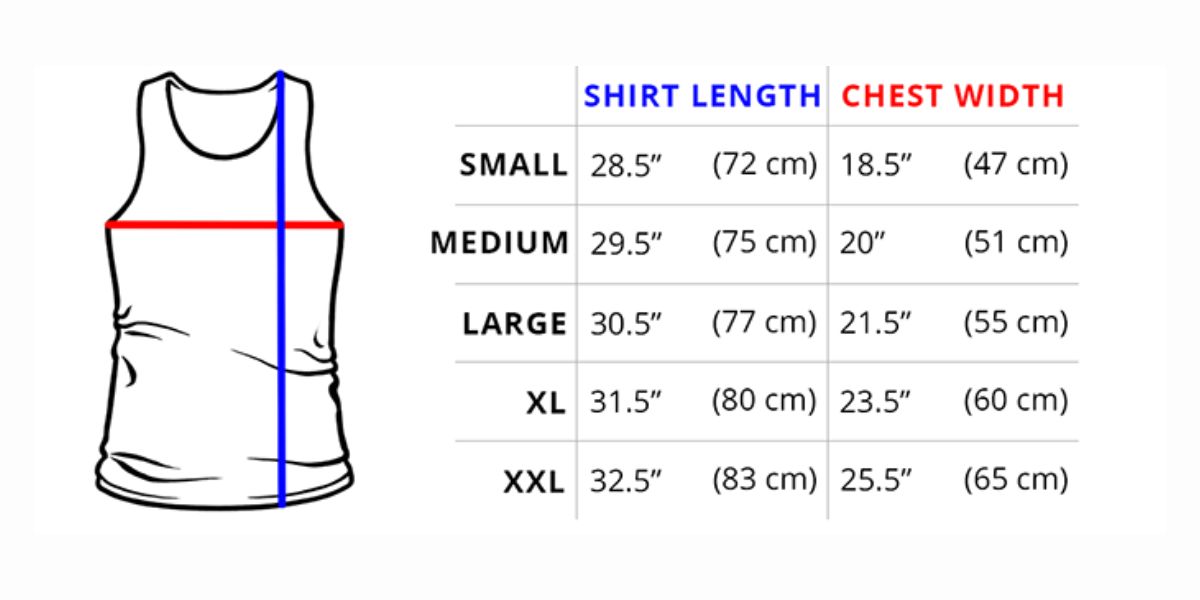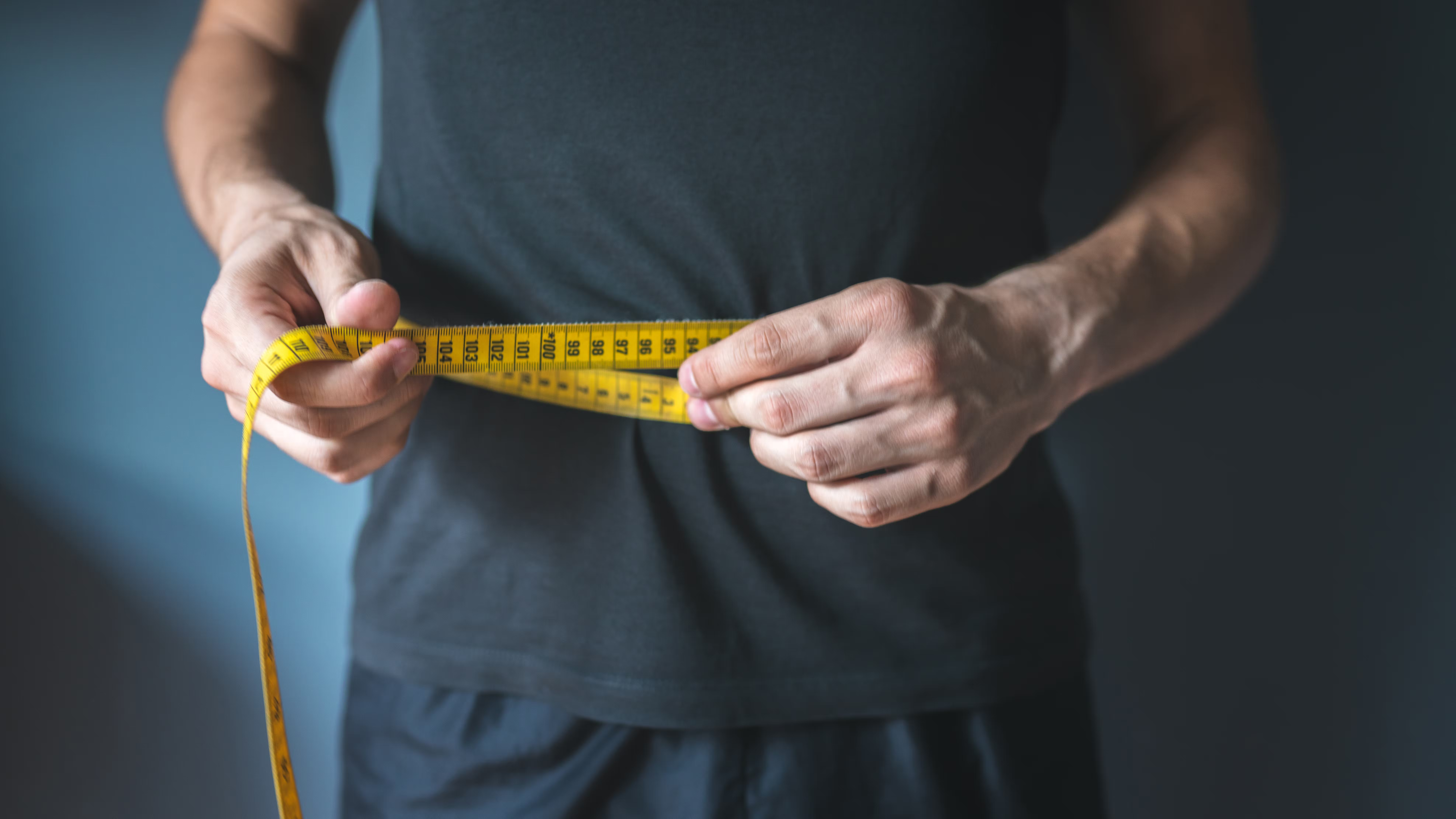Home>How-to Guides>For Women>How To Measure Cup Size For Bra


For Women
How To Measure Cup Size For Bra
Modified: September 23, 2023
Learn how to accurately measure cup size for women's bras. Follow our step-by-step guide to ensure a perfect fit and ultimate comfort.
(Many of the links in this article redirect to a specific reviewed product. Your purchase of these products through affiliate links helps to generate commission for Under-tec.com, at no extra cost. Learn more)
Table of Contents
- Introduction
- Why is measuring cup size important?
- Common misconceptions about cup size
- Step-by-step guide to measuring cup size correctly
- Tools required for accurate measurement
- Taking body measurements for cup size calculation
- Determining band size
- Calculating cup size using the bust and band measurements
- Interpreting the cup size chart and determining the final cup size
- Tips for ensuring the right fit
- Conclusion
Introduction
Welcome to our comprehensive guide on how to measure cup size for a bra. Finding the perfect bra that not only fits comfortably but also enhances your shape is essential for every woman. It can be a daunting task with various misconceptions and confusion surrounding cup sizes, but worry not – we are here to help!
Having the right cup size ensures proper support, eliminates discomfort, and enhances your natural curves. Many women often wear ill-fitting bras due to misunderstandings or lack of knowledge about how to measure their cup size accurately. But fear not, by following our step-by-step guide, you will be able to determine your correct size and enjoy the benefits of a well-fitting bra.
It’s important to understand that cup size is not a static measurement but rather a proportionate measurement in relation to the band size. Cup size is determined by the difference between the bust measurement and the band measurement. This means that cup size can vary even if the measurements remain the same, depending on the band size.
In this guide, we will debunk common misconceptions about cup size and provide you with a simple and accurate method to measure your cup size. We will discuss the tools required for measurement, provide a step-by-step guide to taking body measurements, and explain how to determine your band size and calculate your cup size. Additionally, we will provide tips to ensure a proper fit, allowing you to feel confident and comfortable in your bras.
Remember, finding the right cup size is not just about aesthetics; it is about comfort and support. So, let’s dive in and demystify the process of measuring cup size for a bra!
Why is measuring cup size important?
Measuring cup size is crucial for every woman, as it plays a significant role in ensuring comfort, support, and overall breast health. Here are a few reasons why measuring cup size is important:
- Comfort: Wearing a bra with the correct cup size ensures that it fits properly and feels comfortable throughout the day. Ill-fitting bras with cups that are too small can cause discomfort, digging into the breast tissue or creating bulges, while cups that are too large may not provide adequate support.
- Support: The right cup size provides the necessary support for your breasts, preventing sagging and reducing strain on your back and shoulders. This is especially important for women with larger breasts, as improper support can lead to pain and discomfort in the long run.
- Enhanced Shape: Wearing a bra that fits properly enhances the natural shape of your breasts, giving you a more flattering silhouette. It can help create a smoother appearance under clothing and boost your confidence.
- Posture: A well-fitting bra with the right cup size helps improve your posture by lifting and supporting your breasts. This can help you stand tall, reducing strain on your back and promoting better posture overall.
- Breast Health: Wearing the correct cup size allows for proper blood circulation and lymphatic drainage, which are crucial for breast health. It reduces the risk of tissue damage and discomfort that can arise from wearing bras with cups that are either too small or too large.
It is important to note that your cup size can change over time due to various factors such as weight fluctuations, pregnancy, and hormonal changes. Therefore, it is recommended to measure your cup size periodically to ensure that your bras continue to fit correctly.
By taking the time to measure your cup size accurately, you can experience the benefits of a properly fitting bra, including comfort, support, improved shape, and better overall breast health. It is a small investment that can make a substantial difference in your everyday life.
Common misconceptions about cup size
When it comes to cup size, there are several misconceptions that can cause confusion and lead to ill-fitting bras. Let’s debunk some of the most common misconceptions:
- Myth: The bigger the cup size, the bigger the breasts: Cup size is relative to band size, so a D cup on a smaller band size may actually have a smaller volume than a B cup on a larger band size. Cup size alone does not determine breast size.
- Myth: A larger cup size is always better: While it’s important to wear a bra with the right cup size, there is no “ideal” or “better” cup size. The best cup size is the one that fits your breasts properly and provides the support and comfort you need.
- Myth: Once you find your cup size, it remains the same: Cup size can vary depending on changes in weight, muscle tone, and hormonal fluctuations. It is important to measure your cup size periodically to ensure that your bras continue to fit correctly.
- Myth: The cup size of one brand is the same as another brand: Cup sizes can differ between brands due to variations in sizing standards and design. Always try on bras from different brands to find the best fit.
- Myth: Cup size is the only important factor in finding the right bra: While cup size is crucial, other factors such as band size, strap placement, and the style of the bra also play a significant role in finding the right fit and comfort.
Understanding these common misconceptions about cup size will help you approach bra shopping with a more informed perspective. Remember, finding the perfect bra is about finding the right combination of band size, cup size, and overall fit that works best for you!
Step-by-step guide to measuring cup size correctly
Accurately measuring your cup size is essential for finding a well-fitting bra. Follow these step-by-step instructions to measure your cup size correctly:
- Gather the necessary tools: To measure your cup size accurately, you will need a flexible measuring tape and a mirror.
- Wear a non-padded bra: It is important to wear a non-padded bra or no bra at all when measuring your cup size. Padded bras can alter the measurement and give an inaccurate result.
- Stand in front of a mirror: Position yourself in front of a mirror so that you can see your bust and the measuring tape.
- Measure your band size: Wrap the measuring tape around your ribcage, just below your breasts, making sure it is snug but not too tight. Round the measurement to the nearest whole number. This measurement determines your band size.
- Measure your bust size: Place the measuring tape around the fullest part of your bust, ensuring that it is parallel to the ground. Make sure the tape is not too tight or too loose. Round the measurement to the nearest whole number.
- Determine the difference: Subtract your band measurement from your bust measurement. The difference between the two measurements will determine your cup size.
- Consult a cup size chart: Use a cup size chart to find your cup size based on the difference between your bust and band measurements. Cup sizes are typically denoted by letters, such as A, B, C, etc.
- Try on bras in your calculated cup size: Once you have determined your cup size, try on bras in that size to ensure the best fit. Different styles and brands may fit differently, so it is important to try on a few options to find your perfect match.
Remember, measuring your cup size is just the first step in finding the perfect bra. Other factors such as band size, strap placement, and the style of the bra also contribute to a comfortable and supportive fit. Take the time to try on different styles and sizes to find the one that suits you best.
Tools required for accurate measurement
Having the right tools is crucial for accurately measuring your cup size. Here are the essential tools you will need:
- Flexible measuring tape: A flexible measuring tape is essential for taking accurate measurements. Opt for a soft, flexible tape that can easily wrap around your body without stretching or becoming distorted.
- Mirror: A mirror is an important tool to have when measuring your cup size. It allows you to see your bust and ensure that the measuring tape is aligned properly and parallel to the ground.
- Non-padded bra or no bra: To get accurate measurements, it is crucial to wear a non-padded bra or no bra at all. Padded bras can alter the measurements and give inaccurate results.
- Paper and pen: It can be helpful to have paper and a pen nearby to jot down your measurements and any notes that may aid you in finding the right bra size.
These tools are widely accessible and can be easily obtained from a local department store, lingerie store, or online. It is important to ensure that the measuring tape is in good condition and the mirror provides a clear reflection to avoid any inaccuracies during the measurement process.
By having these tools ready and in good condition, you can ensure that your measurements are accurate, leading to a more successful bra fitting experience.
Taking body measurements for cup size calculation
Accurate body measurements are key to calculating your cup size correctly. Follow these steps to ensure precise measurements:
- Band measurement: Start by taking your band measurement. Stand straight and wrap the measuring tape around your ribcage, just below your breasts. Make sure the tape is snug but not too tight, and ensure it is parallel to the ground. Round the measurement to the nearest whole number. This measurement determines your band size.
- Bust measurement: Next, measure your bust size. Keep the measuring tape parallel to the ground and wrap it around the fullest part of your bust. Make sure the tape is not too tight or too loose. Round the measurement to the nearest whole number.
- Calculating the difference: Subtract your band measurement from your bust measurement. The difference between these two measurements will determine your cup size.
- Interpreting the difference: Consult a cup size chart to determine your cup size based on the difference. Cup sizes are usually denoted by letters, such as A, B, C, etc. If the difference is 0-1 inch, you are likely an A cup. 1-2 inches indicates a B cup, 2-3 inches suggests a C cup, and so on.
It’s important to note that cup size is relative to band size. A 34D cup, for example, has a different volume than a 36D cup. Therefore, it is essential to consider both band and cup size when determining your ideal bra size.
Remember to take your measurements while wearing a non-padded bra or no bra at all to ensure accurate results. Additionally, try to measure yourself in front of a mirror to ensure that the measuring tape is aligned correctly and parallel to the ground.
Taking precise body measurements is the first step in finding a well-fitting bra. By following these steps diligently, you can calculate your cup size accurately and set the foundation for a more comfortable and supportive fit.
Determining band size
Accurately determining your band size is essential for finding a well-fitting bra. Follow these steps to determine your band size:
- Measure your ribcage: Using a flexible measuring tape, wrap it around your ribcage, just below your breasts. Make sure the tape is snug, but not too tight, and ensure it is parallel to the ground. Round the measurement to the nearest whole number. This measurement is your band size.
- Adjust for band size preferences: Some individuals prefer a looser or tighter fit around the band. If you prefer a looser fit, you may want to add an inch or two to your measurement. Conversely, if you prefer a tighter fit, you could deduct an inch or two from your measurement.
- Try on bras in your calculated band size: Once you have calculated your band size, it’s time to try on bras in that size to determine the best fit. Keep in mind that different brands and styles may fit differently, so don’t be discouraged if you need to try on multiple bras to find the right fit.
- Check for proper fit: When trying on a bra, ensure that the band feels snug and secure around your ribcage. It should not ride up at the back or feel overly tight. Additionally, you should be able to slide two fingers comfortably underneath the band.
- Adjust if necessary: If the band feels too loose or too tight, you may need to adjust your band size accordingly. Trying a different band size may provide a more comfortable and supportive fit.
Remember, the band plays a crucial role in providing support, so it’s essential to find the right balance between a snug fit and comfort. The band should be firm enough to hold the bra in place without causing discomfort or restriction.
By accurately determining your band size and considering your personal preferences, you can enhance your bra fitting experience and find a band size that suits you best.
Calculating cup size using the bust and band measurements
Once you have determined your band size, you can calculate your cup size by using your bust and band measurements. Here’s how to do it:
- Subtract the band measurement from the bust measurement: Take your bust measurement and subtract your band measurement from it. The difference between these two measurements will determine your cup size.
- Consult a cup size chart: Use a cup size chart to interpret the difference between your bust and band measurements. Cup sizes are typically denoted by letters, such as A, B, C, etc.
- Example: For example, if your band measurement is 34 inches and your bust measurement is 38 inches, the difference would be 4 inches. Consulting a cup size chart, a 4-inch difference may correspond to a D cup.
- Remember band size: Keep in mind that cup size is relative to band size. For instance, a 34D cup will have a different volume than a 36D cup. Therefore, it is crucial to consider both the band and cup size when finding the right fit.
- Try on bras in the calculated size: Once you have calculated your cup size, it’s time to try on bras in that size to ensure the best fit. Remember that different brands and styles may fit differently, so experimenting with different options is key.
Remember, finding the right cup size is essential for comfort, support, and a flattering fit. Calculating your cup size using the bust and band measurements provides a starting point for finding bras that cater to your individual needs.
Keep in mind that cup size calculations are not foolproof and may vary based on individual factors such as breast shape and preference for a snug or relaxed fit. Adjustments to cup size may be necessary, so make sure to try on different bras to find the one that suits you best.
Interpreting the cup size chart and determining the final cup size
Interpreting the cup size chart is crucial in determining your final cup size. Here’s how you can make sense of the chart and find the right cup size:
- Consult the cup size chart: Look at the cup size chart that corresponds to the brand or sizing system you are using. The chart will typically have band sizes running along the top and cup sizes listed vertically.
- Find your band size: Locate your band size along the top row of the chart. For example, if your band size is 34 inches, find the column that corresponds to 34.
- Identify the difference: Look for the difference between your bust and band measurements on the chart. This will be represented as a numerical value, such as 0, 1, 2, etc.
- Determine your cup size: Trace your finger down from your band size column until you reach the row that corresponds to the difference you calculated. This row will represent your cup size. For example, if your band size is 34 and the difference is 2, the corresponding row could indicate a D cup.
- Check for sister sizes: Cup sizes may vary slightly between different brands and sizing systems. If your calculated cup size doesn’t fit perfectly, consider trying sister sizes. Sister sizes are sizes with different band sizes but the same cup volume. For example, if the calculated cup size is too small, you can try a sister size with a larger band and a smaller cup.
Remember, cup size is just one part of the equation, and band size is equally important. Ensure that you have determined both correctly for the best possible fit.
Keep in mind that every individual’s body shape and preference for fit may vary, so it is essential to try on different bras in the calculated cup size and make adjustments if necessary. Pay attention to how the bra feels and provides support to determine if it is the right cup size for you.
Interpreting the cup size chart is a helpful tool in finding the right cup size, but it should not be used as the sole determinant. Trust your own comfort and fit preferences when determining your final cup size to ensure you find the perfect bra for your unique body.
Tips for ensuring the right fit
When it comes to finding the right fit for your bra, here are some important tips to keep in mind:
- Get a professional fitting: If possible, consider getting a professional fitting at a lingerie store. The expertise of a bra fitter can be invaluable in determining your correct size and recommending styles that suit your body shape.
- Try on different styles: Bras come in various styles, including full cup, demi cup, balconette, and more. Experiment with different styles to find the one that offers the best support, comfort, and desired shape for your breasts.
- Check the band: The band should fit snugly around your ribcage, parallel to the ground. It should not ride up at the back or feel excessively tight. You should be able to slide two fingers comfortably underneath the band.
- Ensure proper cup coverage: The cups should fully enclose the entire breast without any spillage or gaps. If you notice spillage or the cups feel too small, try a larger cup size.
- Check the underwire: If your bra has an underwire, it should sit flat against your ribcage and encase the breast tissue without digging into it. Ensure that the underwire lies comfortably against your chest.
- Adjust the straps: The straps should provide support without digging into your shoulders. Adjust the straps so that they are snug but not too tight. If they keep slipping off your shoulders, they may need to be tightened or adjusted accordingly.
- Move around and test the fit: When trying on a bra, move around, raise your arms, and bend over to check if the bra stays in place and provides adequate support. It should feel comfortable and secure in all positions.
- Periodically measure yourself: Your body and size can change over time, so it’s important to measure yourself periodically to ensure you’re still wearing the correct size. This is especially true if you’ve experienced weight fluctuations, pregnancy, or other changes that may impact your breast size.
Remember, finding the right bra fit is a personal process, and what works for one person may not work for another. It’s essential to prioritize your comfort, support, and overall satisfaction when choosing a bra. Listen to your body and trust your instincts when assessing the fit of a bra.
By keeping these tips in mind and being open to trying different sizes and styles, you can find a bra that fits you perfectly and provides the support and comfort you deserve.
Conclusion
Finding the right cup size for a bra is essential for every woman to ensure comfort, support, and confidence. By following the step-by-step guide to measure cup size correctly, debunking common misconceptions, and understanding the cup size chart, you can navigate the process with ease.
Remember, cup size is not a standalone measurement but rather a proportionate measurement in relation to band size. Take accurate body measurements, including your band and bust size, and calculate the difference to determine your cup size. Consulting a cup size chart will help you interpret the measurements and find your ideal fit.
Throughout the process, it’s important to consider other factors such as style, strap placement, and band fit. Trying on different bras in your calculated cup size, along with sister sizes, can help you find the perfect fit for your unique body shape and personal preferences.
Additionally, keep in mind that everyone’s body shape may change over time due to various factors. It’s important to periodically measure yourself and reassess your cup size to ensure you’re still wearing the correct size and enjoying optimal comfort and support.
With these tips and guidelines in mind, you can confidently embark on your journey to finding the perfect bra size. Remember that the right fit is a combination of comfort, support, and personal satisfaction. Prioritize your own comfort and trust your instincts when determining the best cup size for you.
Here’s to finding the perfect fit and embracing the confidence that comes with it!
